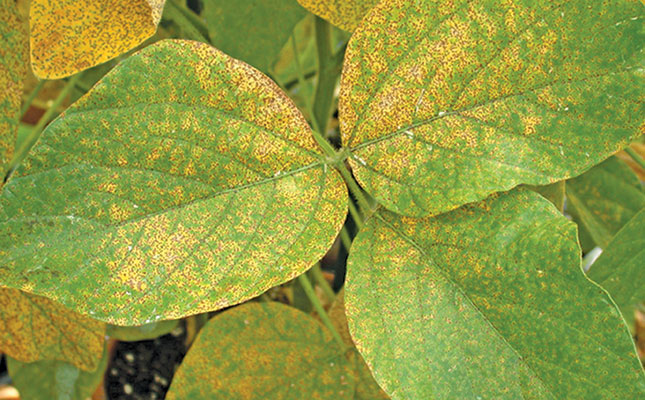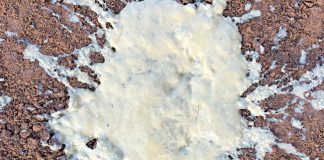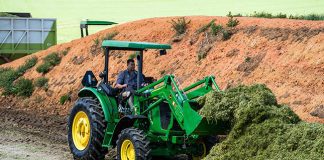
Photo: USDA ARS
Soya rust is caused by two types of fungi, Phakopsora pachyrhizi and P meibomiae.
Infection starts off with a yellow mosaic discolouration on the upper surfaces of
older leaves. At this stage, the disease is usually difficult to identify, as the symptoms
are not easy to see; expert confirmation may be required.
As the disease develops, the entire leaf undergoes yellowing and bronzing. Numerous
pimple-like uredia develop in the lesions, mainly on the lower leaf surface, and release
urediniospores through a central pore.
This process, which can be seen through a magnifying glass, distinguishes soya rust from other lesions.
The spores are released between 10 and 12 days after infection. In cases of severe
infection, clouds of spores may form over infected lands.
Control strategy
Currently, the only way to control soya rust is to apply a chemical fungicide, such as Punch C, Punch Xtra, Capitan 250EW, Folicur 250EW, Bayfidan 250DC, Shavit 25EC or Score 250EC.
Preventative spraying is far more effective than curative spraying, and is recommended
for areas where the disease has previously occurred. If the crop is not sprayed timeously
with a suitable chemical, rapid defoliation can occur about 21 days after infection. However, you should spray only if soya rust has been confirmed to be in the area.
As with all chemical applications, follow the application rates on the labels of the containers with care.
• Source: ‘Identification and control of soya rust’. Agricultural Research Council – Grain Crops Institute.











